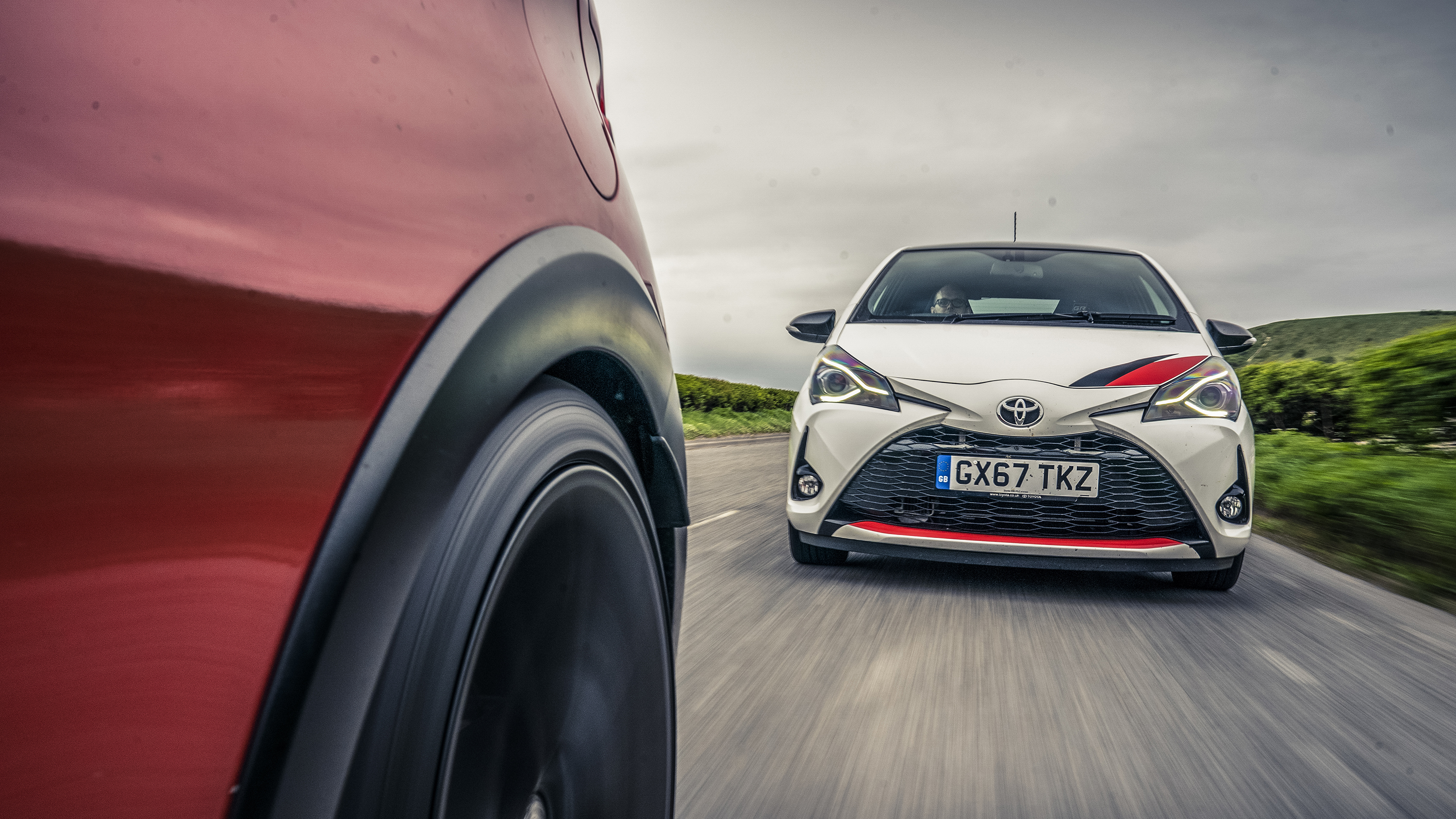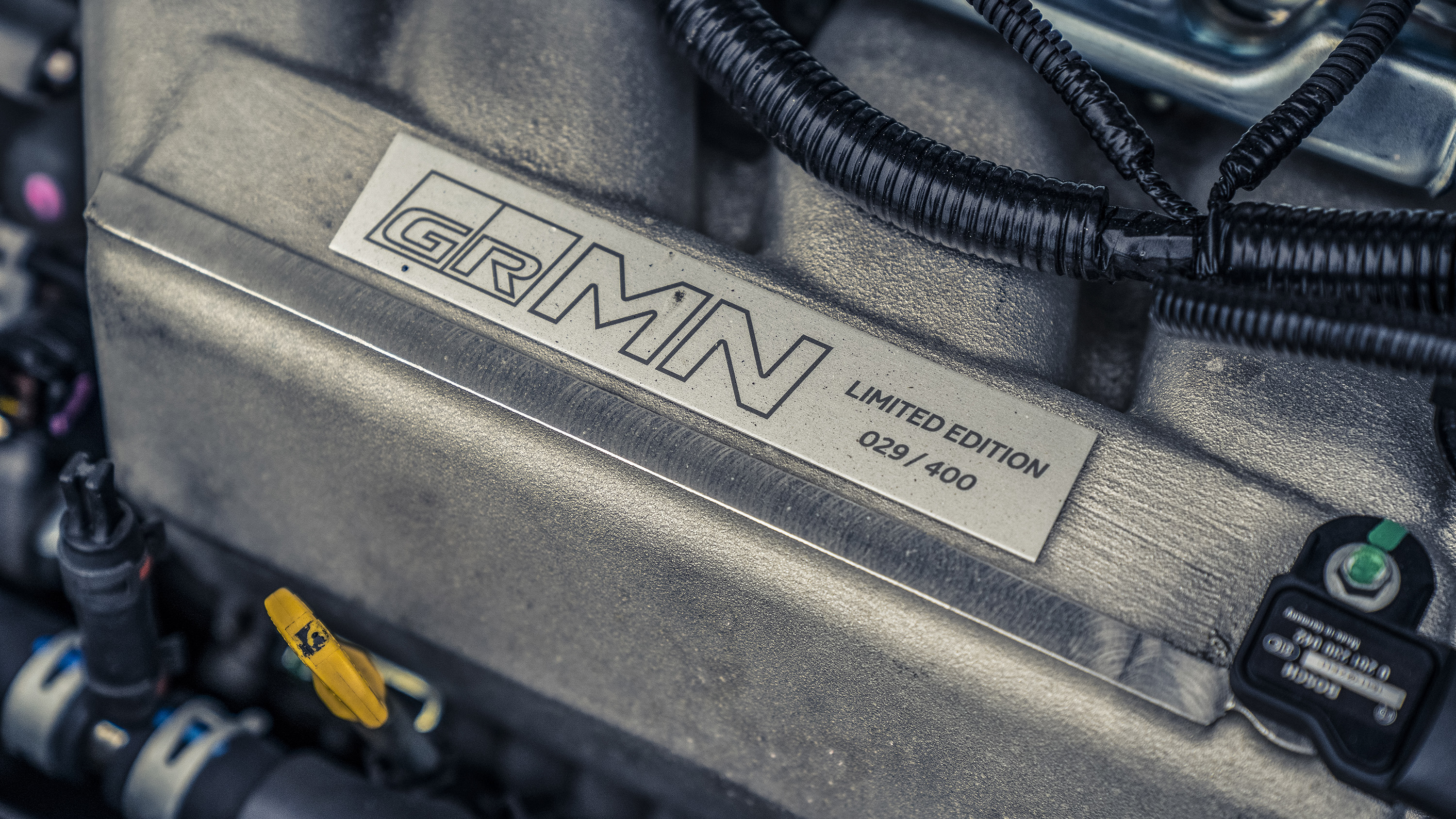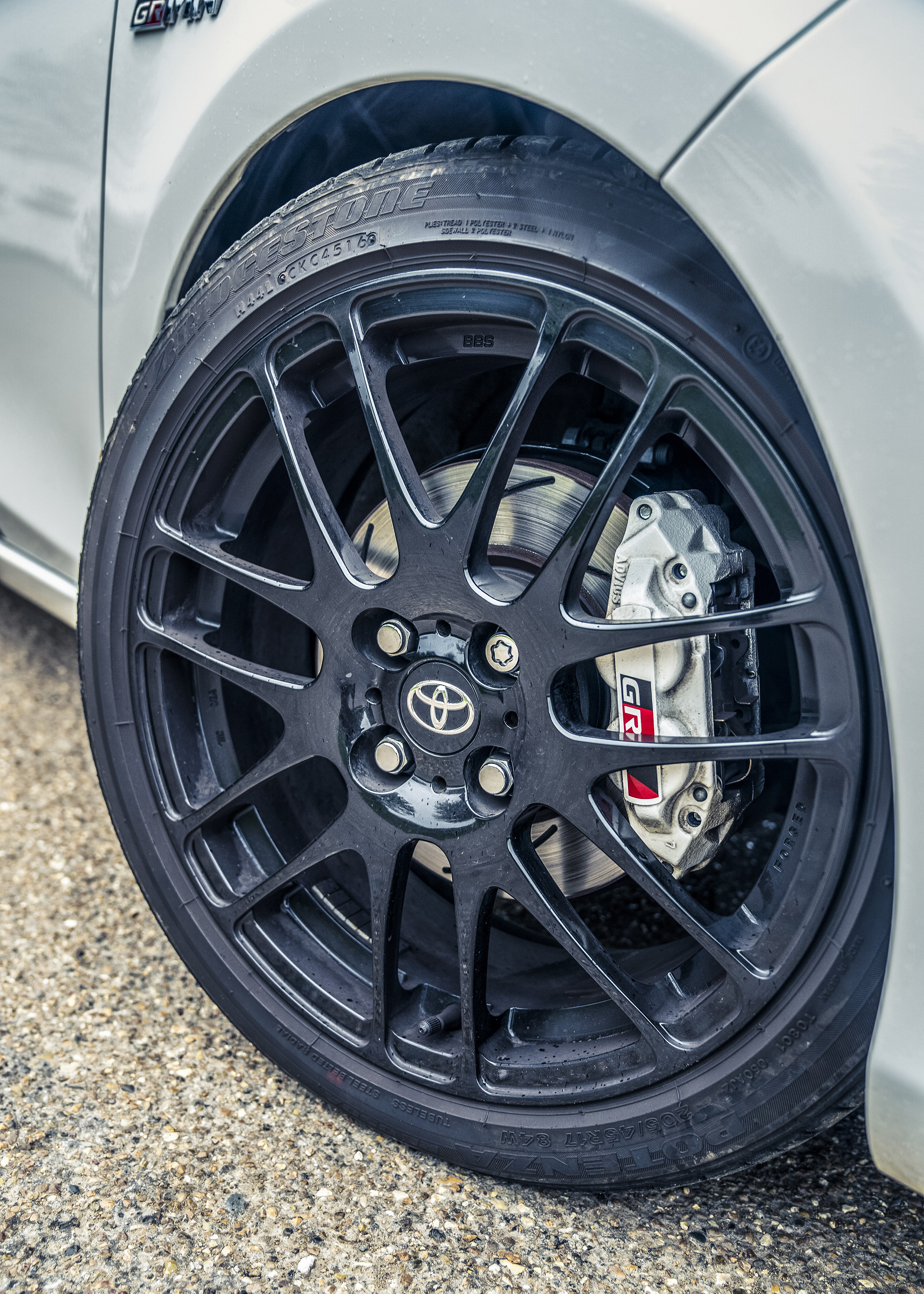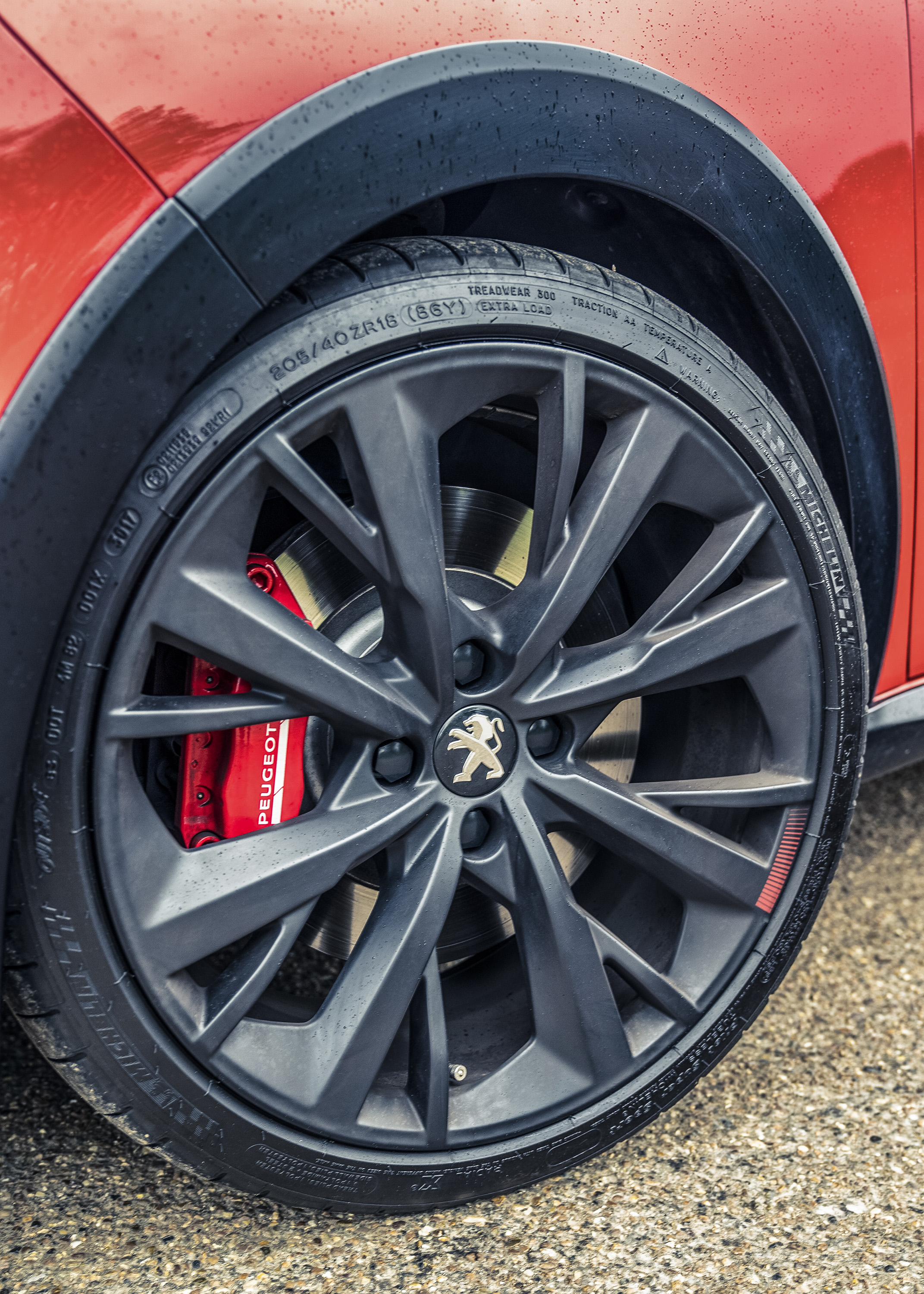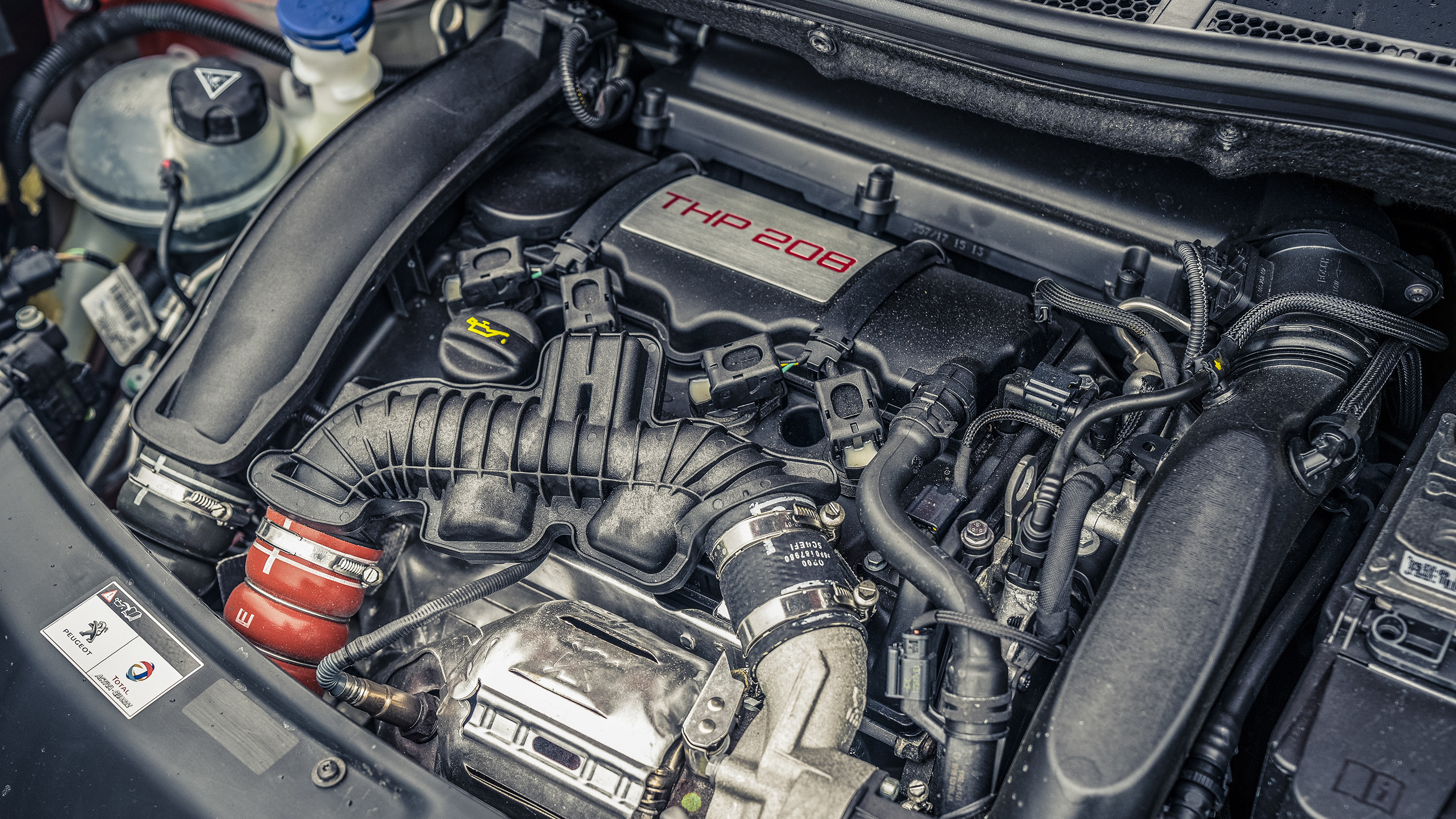
Toyota Yaris GRMN vs Peugeot Sport 208 GTI
In a golden age of hot hatches, two of the most enthralling go head to head
There’s plenty to fret about at the moment. Chances are you’re constantly checking your news app of choice to see which world leader’s closest to pressing their big red button. Or who the latest celebrity death is.
But the world’s not all doom and gloom. While historians are unlikely to look back upon the last few years too fondly, those with an ounce of petrol in their veins might feel a tinge of nostalgia. It’s a golden age for hot hatchbacks, the like of which we might never see matched.
It’s a victory for both quality and quantity. We expect great examples of the breed from Ford or Renault. But when the likes of Hyundai, Mercedes and Toyota – relative strangers to small performance cars – are producing some of the more intriguing hot hatches on sale, you know the genre is going through a particularly purple patch.
We have an example of the latter here. The Yaris GRMN is the first Toyota hot hatch since, well, you tell us. We’ve driven it a couple of times already and found it to be about as pumped-up as a small performance car gets, but there’s a rival we’ve been gagging to put it against.
The Peugeot 208 GTI by Peugeot Sport has a complex name, but a fairly simple recipe: an outrageous amount of power and grip squeezed under the skin of a very small car, resulting in one of the harder cored hot hatches of recent history.
The pair possess remarkably similar stats. The Yaris has a supercharged 1.8-litre engine – borrowed from a Lotus Elise, no less – producing 209bhp and 184lb ft, for a 143mph top speed and 6.4sec 0-62mph time. The 208 has a turbocharged 1.6-litre engine with peaks of 205bhp and 221lb ft, yielding an identical 143mph top speed and 6.5sec 0-62mph time.
Both have a six-speed manual gearbox, exemplary damping and a Torsen limited-slip differential to manage the power going to their front wheels. At 1,160kg, the Peugeot is a mere 25kg heftier than the Toyota. A strong pub lunch, essentially. Their biggest difference is in price: the limited edition, 400-off GRMN costs £26,295. The relatively mass production (though still pretty rare) GTI by PS is £23,555.
Yet it’s the 208 that feels like a luxury item here. Garish red carpets aside, its interior is an oasis of calm when you’re just pootling around. Once you’ve negotiated the curious driving position required by its infamously small steering wheel and top-deck dials, that is. The materials are decent and there’s impressive sound insulation. Terribly boring points, I admit, but ones that are illuminated by the plasticky, noisy Yaris.
The reason is simple. Peugeot designed its car to have a performance variant at the drawing-board stage; Toyota didn’t, and the GRMN is tangibly a rush job, with badly spaced pedals, an overly tall gear lever and some wonderful sports seats that don’t fit properly inside. Both require a compromised driving position, but it’s the Yaris that will irk most, especially if you're tall.
Top Gear
Newsletter
Thank you for subscribing to our newsletter. Look out for your regular round-up of news, reviews and offers in your inbox.
Get all the latest news, reviews and exclusives, direct to your inbox.
But you'll get over it on a good piece of tarmac. Nicking the GT86’s perfectly petite steering wheel was an inspired move, and it controls a car that’s arguably even more fun to throw around on a great British back road.
The GRMN might as well be called the ADHD. It’s the most frenetic small hot hatch, and while it’s expensively suspended, it’s modestly tyred, so it’ll move around without too much provocation. Tucking hard into a corner, every inch of throttle or brake travel has a profound effect on which way the car’s pointing, something you can use for accuracy or yobbery.
Then there’s the engine. Every single hot hatch on sale is turbocharged, save for this one. It’s a quirk of convenience – Lotus supercharges Toyota-sourced 1.8s in its cars, so Toyota’s nicked a few back to keep the GRMN’s development time short – yet it’s also the making of this car.
Its torque is thinly and evenly spread, so you rev the knackers off it to wring out all of the performance. Having to work the engine so much encourages you to work the rest of the car to its limits, too, and you end up driving as hard as you dare but at eerily legal speeds. It’s as real-world as performance cars get.
Even compared to the 208. I adore this car in its ‘by Peugeot Sport’ guise, which brings wider tracks, more heavily cambered wheels and other deeply nerdy things that make it look and feel hard-as-nails next to a standard 208 GTI. While it matches the GRMN spec-for-spec, it’s attitude goes a little further, with inch-bigger 18in wheels wrapped in more serious rubber.
Both have their flaws, but both are fantastic. They’re brilliant little hot hatches in which to shut out all the bad stuff that’s going on
‘Serious’ is the key word, in fact. It’s always been an addictive, thrilling car, but the Yaris makes it seem the slightest bit uptight. While it will misbehave, it needs higher speeds and more aggressive provocation than the Yaris. In most scenarios the 208 would rather grip than slip, so you end up driving it in a different way, focusing in just how senior its point-to-point pace can be.
In short, it’s flipping fast. While there’s a complete dearth of power below 2,000rpm, from 2,001rpm the car simply flings itself at the horizon, and encourages you to hang on right until the red line. For a turbo engine, it loves to rev, and there’s a hardening intensity as you hone in on 6,000rpm. So while it’s significantly torquier than the Toyota, it still begs you to use the lowest gear possible. It may be more grown up, but it’s still a scamp.
Which wins this head-to-head comes down to what you actually want from a car. Because in the hot hatchback’s golden age, there are two distinct flavours to choose from: the all-rounder, which twins the dullness of the everyday with a naughty turn of pace, and the hardcore option, which sacrifices any pretence of luxury for all-out thrills.
The Peugeot excels as the former. As something to drive every day, it embarrasses the Toyota. Its boot is bigger, there’s CarPlay, it uses less fuel… yet with a bit of commitment it’s a true thriller. The Toyota just wants to have fun whatever speed you’re going. While not quite a two-seat, plastic-window track special, it comes with compromises (you can only have it in white, after all). To justify paying 26 grand you really need to live near a great B-road, or have a wealth of trackdays booked.
Both have their flaws, but both are fantastic. They’re brilliant little hot hatches in which to shut out all the bad stuff that’s going on, and prime examples of why this is a time in history that we can allow ourselves to savour. Picking a winner is agonising, but it’s the unashamedly old-fashioned Toyota that seems most worthy of celebration.
The original hot hatch – the VW Golf GTI – had a skunkworks feel to its development, and there’s a whiff of that here, too. Almost every component has been fitted to comply with the tight timescale imposed upon its engineers, its riotous powertrain included. Future GR-badged cars will be more cohesive, less compromised. But I suspect none will surpass the sum of their parts quite like the Yaris GRMN.
Images: Rowan Horncastle





